Sunday September 26th, 2021
Houston Symphony
Classical Concert
The Artistry
of Augustin Hadelich
@Jones Hall
Sunday 9/26/2021 2:30 PM
This weekend in its classical performances the Houston Symphony presents "The Artistry of Augustin Hadelich".
Amazing artistry, beloved favorites, and exciting new discoveries are all in store in these concerts featuring brilliant Grammy Award-winning violinist Augustin Hadelich as soloist and leader. The concerts begin with Bach’s magnificent Concerto  for Violin and Oboe, spotlighting Principal Oboe Jonathan Fischer. Then, Hadelich performs Shostakovich’s bold and dynamic Sonata for Violin, Percussion, and Strings and the sparkling Prelude from Bach’s Partita No. 3. To close, Hadelich shares a beautiful concerto by Joseph Boulogne, Chevalier de Saint-Georges, the son of a slave who went on to become one of the most important violinists and composers in Paris.
for Violin and Oboe, spotlighting Principal Oboe Jonathan Fischer. Then, Hadelich performs Shostakovich’s bold and dynamic Sonata for Violin, Percussion, and Strings and the sparkling Prelude from Bach’s Partita No. 3. To close, Hadelich shares a beautiful concerto by Joseph Boulogne, Chevalier de Saint-Georges, the son of a slave who went on to become one of the most important violinists and composers in Paris.
Read more Houston Symphony
Classical Concert The Artistry of Augustin Hadelich click here
Shen Yun Performing Arts
Wortham Center
Shen Yun invites you to travel back to the magical world of ancient China. Experience a lost culture through the incredible art of classical Chinese dance, and see legends come to life. Shen Yun makes this possible by pushing the boundaries of the performing arts, with a unique blend of stunning costuming, high-tech backdrops, and an orchestra like no other. Be prepared for a theatrical experience that will take your breath away! More information at www.shenyun.com/Houston
Sunday, September 26 2021 1:00 PM
501 Texas Ave, Houston, TX 77002
Directions (map)
Wynonna & Cactus Party of Two
with special guest Abby Hamilton
Wynonna Judd , Cactus Moser Abby Hamilton
@The Heights Theatre
Sunday 9/26/2021 8:00 PM
Doors Open 7:00 PM
Lobby 6:00 PM
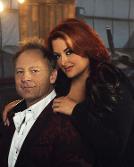
The Heights Theatre
339 W 19th St.
Houston TX 77008
Directions (Map)
214-272-8346
Houston Latin Fest
Downtown Houston
Sunday 9/26/2021 1:00 PM
The Houston Latin Fest is a family- oriented Latin music festival that provides the surrounding Latin communities in Houston a place to gather with family and friends to listen and dance to live Latin music, connect with other fans in an open social space, and celebrate their Latin heritage.
The Houston Latin Fest is a festival that was created for all Latin people(El festival de todos los latinos) to promote unity, diversity and to preserve the tradition of Latin music for future generations ike no other festival. It also features some of today’s top performers in Latin music.
The Houston Latin Fest, highlighting the Latin culture, music, art, cuisine and much more while bringing North, Central and South, and the Caribbean together in one festival providing Houston with the ultimate Latin experience. Un Continente, diferentes Naciones, Latinos unidos!
Midtown Park
2811 Travis Street
Houston, TX 77006
Directions (Map)
Turner Evolution
@NRG Center
Now thru Monday 9/27/2021
Turner started in the small rural town of York, Pennsylvania. A hometown event fueled by passionate automotive enthusiasts. With over a decade in the making, they have grown to eight major cities across the country in just four years, including being the first import automotive show to debut in Puerto Rico in 2019.

With every aspect of their shows they strive to be the standard when it comes to Quality Automotive Events. Their events unify multiple subcultures under one roof, and provide forms of entertainment ranging from BMX and B-Boy demos, to DJs, concerts and giveaways.
Turner Evolution says, "This industry is in our roots. We take great pride in our growth and it is our continued mission to be a pillar of professionalism and progress in the automotive industry while still preserving the integrity of our culture."
NRG Center
1 NRG Pkwy
Houston, TX
Directions (map)
Send Us Your
Weekend Event
editor@weekendhouston.net
Daryl Hall
and John Oates
In Concert
Cynthia Woods
Mitchell Pavilion
Sunday 9/26/2021 7:00 PM
Hall & Oates began their duo back in 1970 in Philadelphia. Daryl Hall is generally the lead vocalist; John Oates primarily plays electric guitar 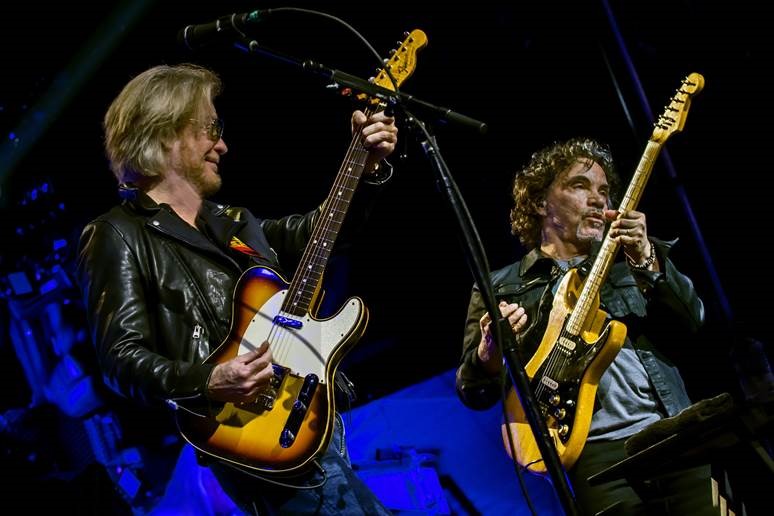 and provides backing vocals. The two write most of the songs they perform, separately or in collaboration. They achieved their greatest fame from the mid-1970s to the mid-1980s with a fusion of rock and roll and rhythm and blues.
and provides backing vocals. The two write most of the songs they perform, separately or in collaboration. They achieved their greatest fame from the mid-1970s to the mid-1980s with a fusion of rock and roll and rhythm and blues.
In an interview in a 1983 issue of Juke Magazine, Oates was asked about whether conflicts arose. He replied that "we have our creative differences but we reconcile them". He said that if they both came up with a different way of doing something, they'd try it both ways and whatever sounded the better of the two they would use.
Between May and June two years ago they made their first tour of Latin America, visiting Argentina, Chile and Brazil. In Santiago de Chile, Hall said "Here we are, finally! but better late than never". Later they performed for the first time in Spain.
This weekend its Hall and Oats with Squeeze & KT Tunstall at the Pavilion.
Cynthia Woods Mitchell Pavilion
2005 Lake Robbins Drive
The Woodlands, TX 77380
Directions (Map)
(281) 364-3010
Weekend Sunday Reads
Stories Worth Weekend Reading
The Taliban’s Return
Is Catastrophic for Women
As a photojournalist covering Afghanistan for two decades, I’ve seen how hard the country’s women have fought for their freedom, and how much they have gained. Now they stand to lose everything.
One morning in the summer of 1999, Shukriya Barakzai woke up feeling dizzy and feverish. According to the Taliban’s rules, she needed a Maharram, a male guardian, in order to leave home to visit the  doctor. Her husband was at work, and she had no sons. So she shaved her 2-year-old daughter’s head, dressed her in boys’ clothing to pass her off as a guardian, and slipped on a burka. Its blue folds hid her fingertips, painted red in violation of the Taliban’s ban on nail polish. She asked her neighbor, another woman, to walk with her to the doctor in central Kabul.
doctor. Her husband was at work, and she had no sons. So she shaved her 2-year-old daughter’s head, dressed her in boys’ clothing to pass her off as a guardian, and slipped on a burka. Its blue folds hid her fingertips, painted red in violation of the Taliban’s ban on nail polish. She asked her neighbor, another woman, to walk with her to the doctor in central Kabul.
Around 4:30 p.m. they left the doctor’s office with a prescription. They were heading toward the pharmacy when a truckload of Taliban militants from the Ministry for the Propagation of Virtue and Prevention of Vice pulled up beside them. The men regularly drove around Kabul in pickup trucks, looking for Afghans to publicly shame and punish for violating their moral code.
. . .read more at The Atlantic click here
Low Pay, No Benefits
Rude Customers:
Restaurant Workers
Quit At Record Rate
Heard on All Things Considered
This week Monday July 20, 2021
Awooden spoon gliding over cast iron. Barely tall enough to see over the stove, Lamar Cornett watched his mother, a cook, make his favorite dish of scrambled eggs.
That first cooking lesson launched a lifelong journey in food. Cornett has spent over 20 years in Kentucky restaurants, doing every job short of being the owner. The work is grueling and tense but rewarding and rowdy, and so fast-paced that the pandemic shutdown was like lightning on a cloudy day.
"It was almost like there was this unplanned, unorganized general strike," Cornett said.
Cornett, off work for a few weeks, realized he received enough money through unemployment benefits to start saving . . .
In those rare quiet moments, millions of restaurant workers like Cornett found themselves thinking about the realities of their work. Breaks barely long enough to use the restroom or smoke a cigarette. Meals inhaled on the go. Hostile bosses, crazy schedules and paltry, stagnant pay.
To top it off: rude customers, whose abuses restaurant staff are often obligated to tolerate. And lately, testy diners have only gotten more impatient as they emerge from 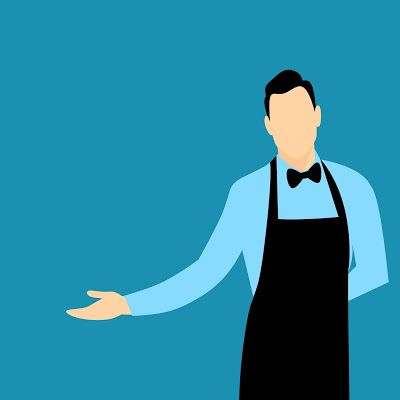 the pandemic shutdowns.
the pandemic shutdowns.
Cornett, off work for a few weeks, realized he received enough money through unemployment benefits to start saving — for the first time. He wondered if the work he loves would ever entail a job that came with health insurance or paid leave.
Weekend Sunday Read
Nicole Krauss’s Beautiful 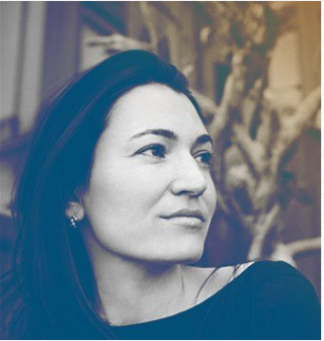 Letter to Van Gogh on How to Break the Loop of Our Destructive Patterns
Letter to Van Gogh on How to Break the Loop of Our Destructive Patterns
By Maria Popova
From Brain Pickings
“Bravery is always more intelligent than fear, since it is built on the foundation of what one knows about oneself: the knowledge of one’s strength and capacity, of one’s passion.”
These patterns of belief — about who we are, about who others are, about how the world works — come to shape our behavior, which in turn shapes our reality, creating a loop that calls to mind physicist David Bohm’s enduring wisdom: “Reality is what we take to be true. What we take to be true is what we believe… What we believe determines what we take to be true.”
“Feeling helpless and confused in the face of random, unpatterned events, we seek to order them and, in so doing, gain a sense of control over them,” the great psychiatrist Irvin D. Yalom wrote in his magnificent meditation on uncertainty and our search for meaning. But as our terror of losing control compels us to grasp for order and certainty, we all too often end up creating patterns that ultimately don’t serve us, then repeat those patterns under the illusion of control.
To keep repeating a baleful pattern without recognizing that we are caught in its loop is one of life’s greatest tragedies; to recognize it but feel helpless in breaking it is one of our greatest trials; to transcend the fear of uncertainty, which undergirds all such patterns of belief and behavior, is a supreme triumph.
"But as our terror of losing control compels us to grasp for order and certainty, we all too often end up creating patterns that ultimately don’t serve us, then repeat those patterns under the illusion of control."
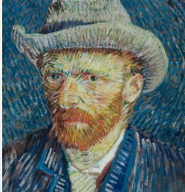
That triumphant transcendence of the pattern is what novelist Nicole Krauss explores in an exquisite response to Vincent van Gogh’s 1884 letter to his brother about fear and risk-taking. Her piece is part of an exhibition by the Van Gogh Museum in Amsterdam, in which twenty-three contemporary artists and writers respond to the letters of Van Gogh in paintings, sculptures, letters, poems, photographs, and videos.
. . .more @Brian Pickings.com
The 60-Year-Old Scientific Screwup That Helped Covid Kill
By Megan Molteni
WIRED.com
All pandemic long, scientists brawled over how the virus spreads. Droplets! No, aerosols! At the heart of the fight was a teensy error with huge consequences.
Early one morning, Linsey Marr tiptoed to her dining room table, slipped on a headset, and fired up Zoom. On her computer screen, dozens of familiar faces began to appear. She  also saw a few people she didn’t know, including Maria Van Kerkhove, the World Health Organization’s technical lead for Covid-19, and other expert advisers to the WHO. It was just past 1 pm Geneva time on April 3, 2020, but in Blacksburg, Virginia, where Marr lives with her husband and two children, dawn was just beginning to break.
also saw a few people she didn’t know, including Maria Van Kerkhove, the World Health Organization’s technical lead for Covid-19, and other expert advisers to the WHO. It was just past 1 pm Geneva time on April 3, 2020, but in Blacksburg, Virginia, where Marr lives with her husband and two children, dawn was just beginning to break.
Marr is an aerosol scientist at Virginia Tech and one of the few in the world who also studies infectious diseases. To her, the new coronavirus looked as if it could hang in the air, infecting anyone who breathed in enough of it. For people indoors, that posed a considerable risk. But the WHO didn’t seem to have caught on. Just days before, the organization had tweeted “FACT: #COVID19 is NOT airborne.” That’s why Marr was skipping her usual morning workout to join 35 other aerosol scientists. They were trying to warn the WHO it was making a big mistake.
Over Zoom, they laid out the case. They ticked through a growing list of superspreading events in restaurants, call centers, cruise ships, and a choir rehearsal, instances where people got sick even when they were across the room from a contagious 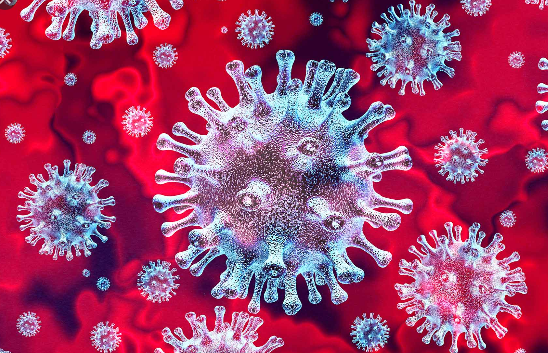 person. The incidents contradicted the WHO’s main safety guidelines of keeping 3 to 6 feet of distance between people and frequent handwashing. If SARS-CoV-2 traveled only in large droplets that immediately fell to the ground, as the WHO was saying, then wouldn’t the distancing and the handwashing have prevented such outbreaks? Infectious air was the more likely culprit, they argued. But the WHO’s experts appeared to be unmoved. If they were going to call Covid-19 airborne, they wanted more direct evidence—proof, which could take months to gather, that the virus was abundant in the air. Meanwhile, thousands of people were falling ill every day.
person. The incidents contradicted the WHO’s main safety guidelines of keeping 3 to 6 feet of distance between people and frequent handwashing. If SARS-CoV-2 traveled only in large droplets that immediately fell to the ground, as the WHO was saying, then wouldn’t the distancing and the handwashing have prevented such outbreaks? Infectious air was the more likely culprit, they argued. But the WHO’s experts appeared to be unmoved. If they were going to call Covid-19 airborne, they wanted more direct evidence—proof, which could take months to gather, that the virus was abundant in the air. Meanwhile, thousands of people were falling ill every day.
Why the Tomato Was Feared in Europe
for More Than 200 Years
How the fruit got a bad rap from the beginning.
by K. Annabelle Smith
Smithsonian.com
In the late 1700s, a large percentage of Europeans feared the tomato.
A nickname for the fruit was the “poison apple” because it was thought that aristocrats got sick and died after eating them, but the truth of the matter was that wealthy Europeans used pewter plates, which were high in lead content. Because tomatoes are so high in acidity, when placed on this particular tableware, the fruit would leach lead from the plate, resulting in many deaths from lead poisoning. No one made this connection between plate and poison at the time; the tomato was picked as the culprit.
Around 1880, with the invention of the pizza in Naples, the tomato grew widespread in popularity in Europe. But there’s a little more to the story behind the misunderstood fruit’s stint of unpopularity in England and America, as Andrew F. Smith details in his The Tomato in America: Early History, Culture, and Cookery. The tomato didn’t get blamed just for what was really lead poisoning. Before the fruit made its way to the table in North America, it was classified as a deadly nightshade, a poisonous family of Solanaceae plants that contain toxins called tropane alkaloids.
One of the earliest-known European references to the food was made by the Italian herbalist, Pietro Andrae Matthioli, who first classified the “golden apple” as a nightshade and a mandrake—a category of food known as an aphrodisiac. The mandrake has a history that dates back to the Old Testament; it is referenced twice as the Hebrew word dudaim, which roughly translates to “love apple.”
On the Link Between Great Thinking
and Obsessive Walking
From Charles Darwin to Toni Morrison
Jeremy DeSilva Looks at
Our Need to Move
Charles Darwin was an introvert. Granted, he spent almost five years traveling the world on the Beagle recording observations that produced some of the most important scientific insights ever made. But he was in his twenties then, embarking on a privileged, 19th-century naturalist’s version of backpacking around Europe during a gap year. After returning home in 1836, he never again stepped foot outside the British Isles.
He avoided conferences, parties, and large gatherings. They made him anxious and exacerbated an illness that plagued much of his adult life. Instead, he passed his days at Down House, his quiet home almost twenty miles southeast of London, doing most of his writing in the study. He occasionally entertained a visitor or two but preferred to correspond with the world by letter. He installed a mirror in his study so he could glance up from his work to see the mailman coming up the road—the 19th-century version of hitting the refresh button on email.
Houston's Online Weekend Planning Entertainment Guide
Looking for that Sunday weekend event and can't find it try our custom "Google Search"

